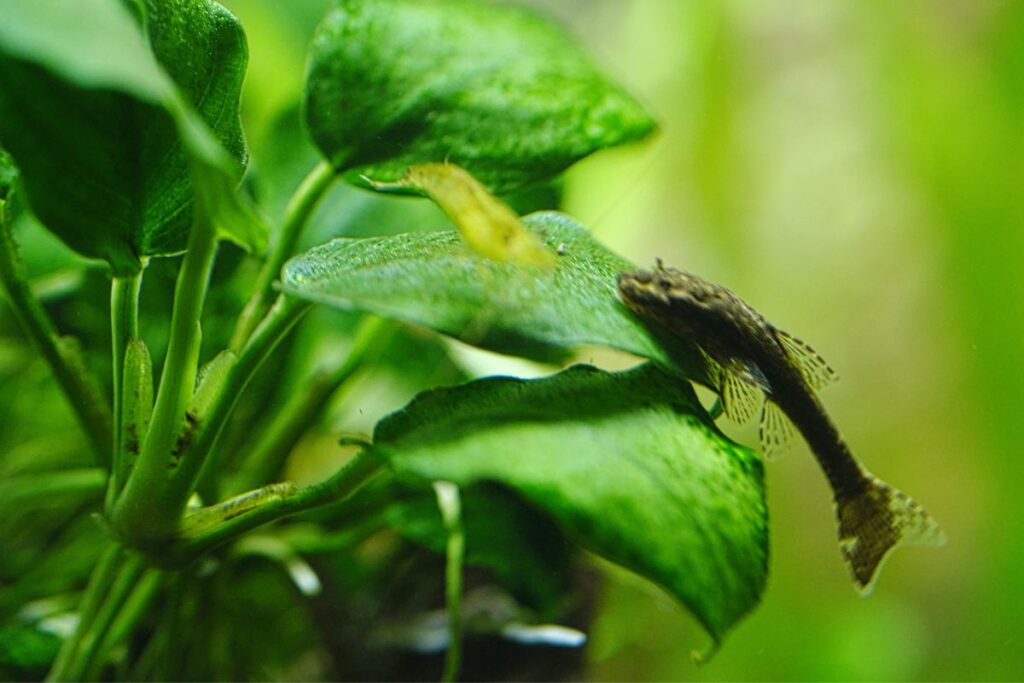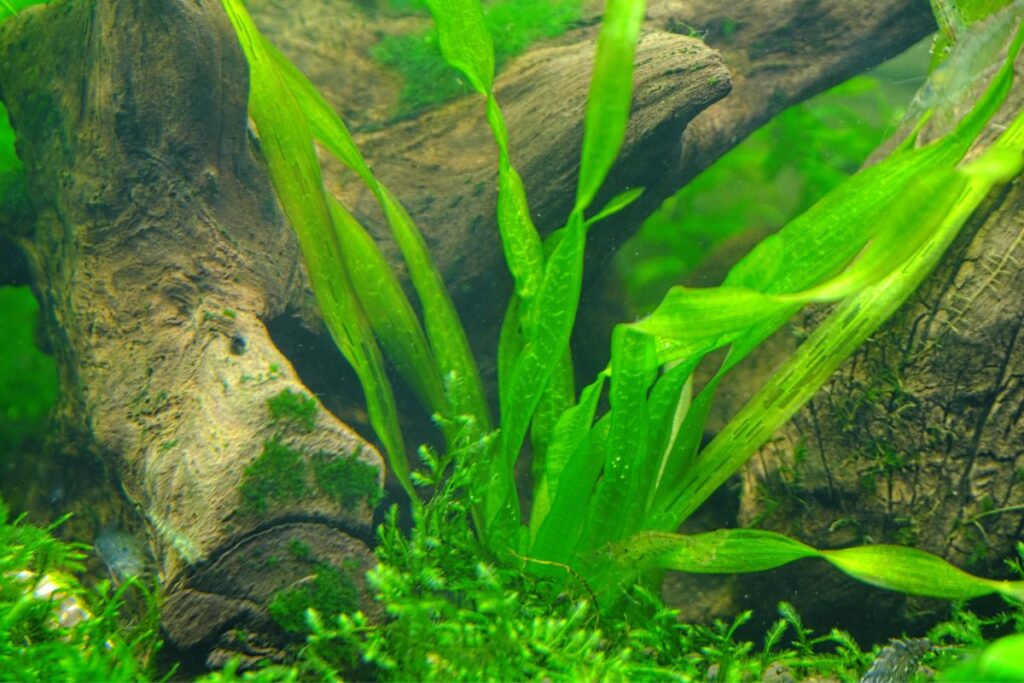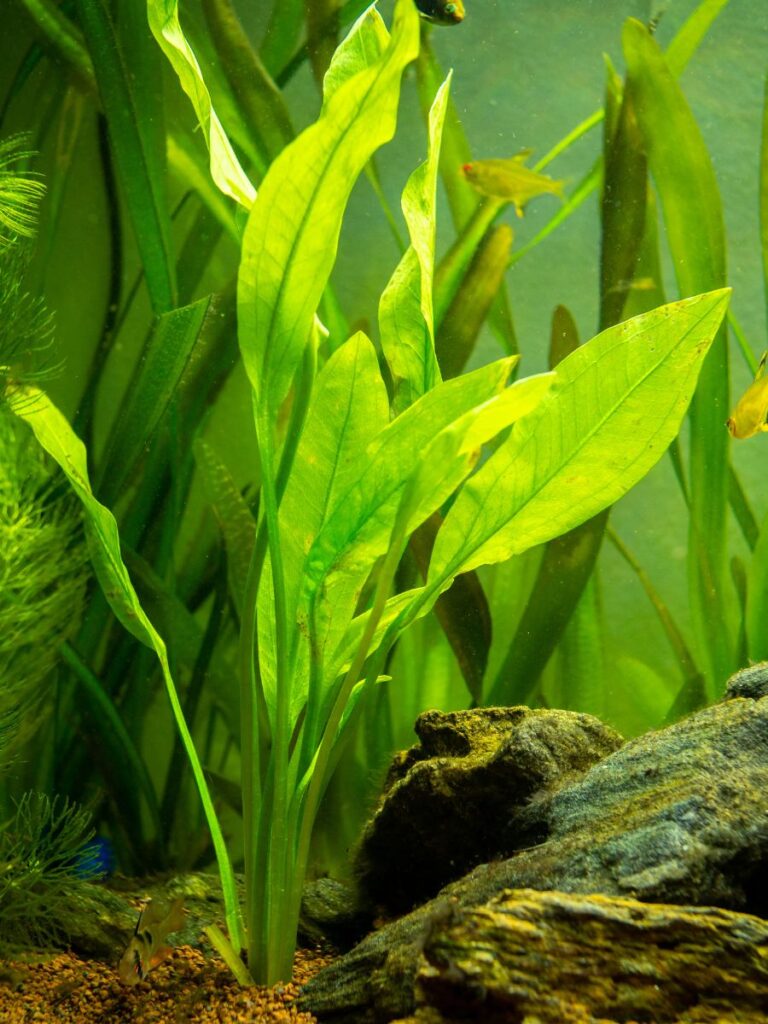Hey there! If you’re wondering if plants can grow in sand aquariums, then I’m here to tell you that the answer is yes.
In fact, many different types of plants can thrive in a sandy substrate. As long as certain conditions are met, they can even be quite beautiful additions to your tank.
In this article, I’ll explain why sand aquariums are great for growing plants and how you can make sure yours will stay healthy and happy.
From setting up the right environment to choosing the right type of plant for your tank, I’ll provide all the tips and tricks you need so you can have a thriving underwater garden.

Contents
Can Plants Grow In Sand Aquarium?
Yes, plants can grow in sand aquariums! It is possible to create a thriving environment that supports plant growth with the right substrate alternatives and water chemistry.
Sand can be used as an effective alternative to traditional substrates like gravel or clay. In addition, adequate light needs must be met in order for aquatic plants to thrive in your aquarium.
With proper care and maintenance, you can create a beautifully planted ecosystem that will bring life to your tank and provide a healthy habitat for fish. Planting correctly and maintaining optimal parameters are key components of creating a successful aquarium setup with sand as the base substrate material.
How To Grow Aquarium Plants In Sand
Sure, plants can grow in sand aquariums—but it requires a little extra know-how!
Growing your aquarium plants in sand is actually quite simple when you understand what they need to survive. To make sure your aquatic friends thrive, you’ll want to ensure that they get the right amount of light, water flow, and pH levels.
When setting up an aquarium with sand as a substrate, be sure to choose an aquarium light that’s suitable for your chosen plant species. This will help them benefit from photosynthesis which provides essential energy for growth.
Additionally, consider adding a gentle water flow to provide oxygenated water and circulation around the roots of your plants. Lastly, monitor the pH level regularly as this affects how easily certain nutrients are absorbed by the plants’ root systems.
In order to give your plants the best chance of thriving in their new environment, make sure you keep these three elements closely monitored and adjust accordingly where needed. With proper care and attention, soon enough you’ll have beautiful greenery growing in your sandy abode!
What Plants Grow Best In Sand Aquariums?
By understanding what kind of plants grow best in sand aquariums, you can create a stunning underwater landscape that your family or friends will love. The key to success lies in selecting aquatic plant species that thrive when planted directly into sandy substrates.
There are some gorgeous options available such as the ones below.
Anubias Nana

This is a small, hardy plant that can grow well in sand aquariums. It has broad, dark green leaves and can tolerate a wide range of water conditions. Anubias Nana can be attached to rocks, driftwood, or simply placed in the sand.
Java Fern

Java Fern is a popular choice for sand aquariums due to its ability to grow on various surfaces, including sand. It has long, narrow leaves and is tolerant of low light conditions. Java Fern can be attached to driftwood, rocks, or placed directly in the sand.
Vallisneria

Vallisneria, also known as Eelgrass, is a tall, grass-like plant that grows well in sandy substrates. It can grow in both low and high light conditions and can tolerate a wide range of water parameters. Vallisneria is a great choice for creating a natural, grassy look in a sand aquarium.
Cryptocoryne

Cryptocoryne, or Crypts, are a group of plants that can grow well in sand aquariums. They have various leaf shapes and colors, making them a versatile choice for any aquascape. Crypts can tolerate low light conditions and grow well when rooted in the sand.
Amazon Sword

The Amazon Sword is a large, robust plant that can thrive in sandy aquariums. It has long, broad leaves that can create a focal point in the aquarium. Amazon Swords require moderate light and can grow quite large, making them suitable for larger sand aquariums.
Dwarf Sagittaria

Dwarf Sagittaria is a small, grass-like plant that can grow well in sand aquariums. It can spread quickly, creating a lush carpet in the aquarium. Dwarf Sagittaria requires moderate light and can tolerate a wide range of water conditions.
Pygmy Chain Sword

Pygmy Chain Sword is another small, grass-like plant that can grow well in sand aquariums. It can form a dense carpet in the aquarium, providing a natural look. Pygmy Chain Sword requires moderate light and can tolerate a wide range of water conditions.
Water Wisteria

Water Wisteria is a fast-growing plant that can thrive in sandy substrates. It has unique, lace-like leaves that can provide a beautiful backdrop in the aquarium. Water Wisteria requires moderate to high light and can tolerate a wide range of water conditions.
If you decide on planting these lovely little gems in your tank’s sand bed then be sure to provide optimized levels of light and nutrients, which might require additional supplementation with liquid fertilizers depending on the type of setup you have.
Is Sand Better Than Gravel For Aquarium Plants?
The choice between sand and gravel for aquarium plants depends on the specific needs of the plants and the overall aesthetic you want to achieve in the aquarium. Each substrate has its advantages and disadvantages, and the best option will vary depending on your goals and preferences.
Sand is a popular substrate choice for aquariums with plants because it provides a more natural and attractive appearance. It is also less likely to have gaps, which helps prevent fish waste and debris from getting trapped in the substrate. On the other hand, sand is more compact and can sometimes restrict the root growth of aquatic plants. Certain plant species may struggle to grow in sand as it does not provide the same level of support and stability as gravel. Additionally, sand can be more challenging to clean and maintain, as it is easily stirred up and may cloud the water.
Gravel, on the other hand, provides better anchorage for plants and allows for more efficient water flow and root growth. It also creates more space for beneficial bacteria, which aids in maintaining a healthy aquarium environment. Gravel is typically easier to clean, as debris tends to sit on top of the substrate rather than getting trapped in between the particles. However, gravel may not be as aesthetically pleasing as sand, and small-grained gravel can still have the issue of trapping debris.
In conclusion, both sand and gravel have their benefits and drawbacks when it comes to aquarium plants. Sand offers a more natural appearance and prevents debris from getting trapped in the substrate, while gravel provides better support and anchorage for plants and is generally easier to clean. The best choice will depend on the specific needs of the plants in the aquarium and the aesthetic preferences of the aquarium owner.
Is Sand Or Soil Better For Aquarium Plants?
Both sand and soil have their own advantages and disadvantages when it comes to supporting aquarium plants, and the choice between them largely depends on the specific needs of the plants you wish to grow and your personal preferences.
Sand is an attractive option for aquarium plants as it provides a natural and aesthetically pleasing substrate. Additionally, it is less likely to cloud the water compared to soil. However, one of the major drawbacks of sand is that it lacks nutrients, which are essential for the growth and development of aquarium plants. In addition, sand has a compact nature, which may inhibit root growth for some plant species and limit the circulation of nutrients and oxygen. Furthermore, if you have bottom-dwelling fish, they may struggle to sift through the sand in search of food.
On the other hand, soil offers a nutrient-rich environment for aquarium plants, which can promote healthy growth and development. This is particularly beneficial for root-feeding plants, which rely heavily on nutrients within the substrate. Soil can also provide a more stable environment for plants, as it is less prone to shifting than sand. However, using soil in an aquarium comes with its own set of challenges. It can make the water cloudy, especially during the initial setup or when plants are being moved or replanted. Additionally, soil tends to break down over time, which may require it to be replaced in order to maintain the nutrient levels.
In short, both sand and soil have their own unique benefits for aquarium plants. Sand provides a visually appealing and low-maintenance substrate, while soil offers a nutrient-rich environment to promote healthy plant growth. Ultimately, the choice between sand and soil will depend on the specific needs of your aquarium plants, as well as your personal preferences and maintenance requirements.
Do root tabs work in sand?
Root tabs work effectively in sand substrates as they provide essential nutrients directly to the plant roots. Sand substrates are often nutrient-poor, making it difficult for aquatic plants to obtain the necessary nutrients for healthy growth. Root tabs are designed to be inserted into the substrate close to the plant roots, ensuring that nutrients are easily accessible, promoting healthier and more vigorous plant growth.
In addition to being an effective method for providing nutrients to aquatic plants, root tabs also have the advantage of not releasing excess nutrients into the water column. This helps to maintain water quality and reduce the risk of algae blooms, which can be a problem in aquariums with high levels of nutrients. The slow-release formula of root tabs ensures that the plants receive a steady supply of nutrients over an extended period. As a result, root tabs work well in sand substrates, helping to create a lush, healthy aquatic environment for both plants and aquatic life.
Conclusion
Yes, plants can indeed grow in sand aquariums! With the right type of sand and a little bit of planning, you can create an attractive tank with thriving aquatic plants.
It’s important to know which types of sand are suitable for your aquarium before adding it to the tank. You should also consider whether sand or soil is better for the specific plant species that you have chosen.
If done correctly, growing plants in a sand aquarium can be both rewarding and aesthetically pleasing. The key is doing plenty of research beforehand and understanding what works best for each individual plant species.
Once you find out the ideal conditions for your particular plants, you’ll be able to create an amazing-looking environment full of vibrant colors and life.
Overall, growing plants in a sand aquarium isn’t difficult if you take the time to understand what they need to thrive. With enough patience, awareness and preparation, you can easily cultivate an incredibly beautiful underwater garden without having to worry about any major problems later down the line.
